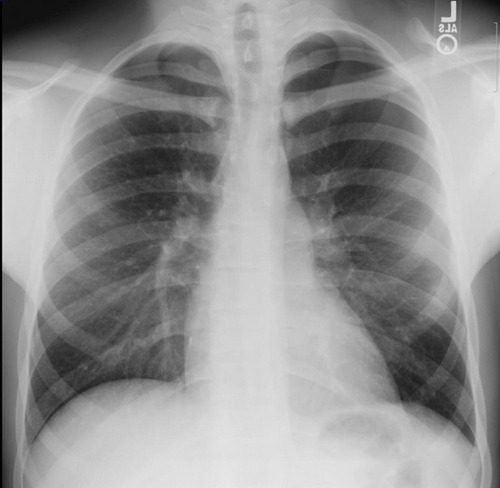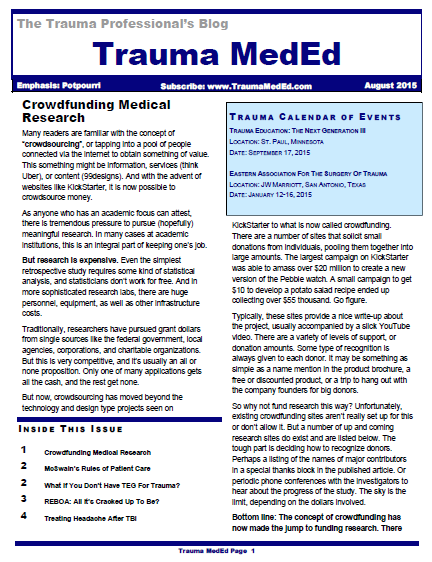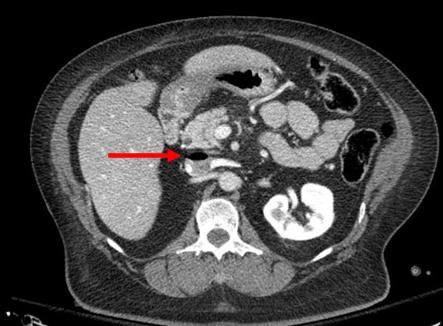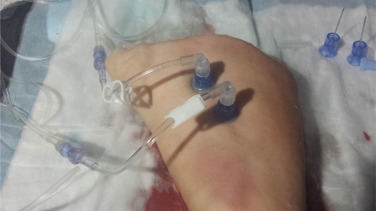
Why did you move the conference from the History Center?
Metropolitan State University is a little less expensive and, most importantly, they let you drink beverages in the auditorium. They have a new parking ramp as well. And it’s college, let’s all pretend we are young again.
Will I have colleagues from my department that I can support/heckle?
Of course! As it has been for the last two years, Emergency Medicine has been the majority contributor of in-kind faculty support for this conference. Here’s who is contributing this year:
- Dr. Robert LeFevere and his documentation tips and pitfalls
- Dr. Ryan Bourdon helps you not trip up while taking care of the frail falling elderly patient
- Dr. Charles Bruen is handling the pediatric airway and the little itty bitty tools needed for that – and that, my friends, is 0.25 hr of pediatric trauma CME!
- Elise Haupt, PA-C and Martha Serbus, RN will be talking about “talking down” that agitated patient.
- Dr. Rasimas from Tox & Psychiatry has got some back-up plans if the “talk down” didn’t work.
- Dr. Alan Sazama is getting some serious screentime and hands-on education about ankle reduction and splinting.
- Dr. Kevin Kilgore is in charge of the pre-show slides and break slides. He’s got a small handful of decent pictures and teaching points, I’ve heard.
- Dr. Michael Zwank is teaming up with Kris Norman, RN to make a little video about IV placement.
- A couple of surprises
- And you’ll see way, way too much of Jessie Nelson.
Those people are great, but that’s not enough to fill 4 hours. What else you got?
Yes, we have other specialties represented. I’m not going to tell you the entire schedule. I need to keep some of the mystery alive, right? Got some Burn stuff, some Neurosurgery, some Ortho. Even got a hospitalist to talk Palliative Care in Trauma. And maybe, just maybe, that trauma patient does NOT need to be transferred here.
Hey, you’ve gotten all fancy (and cheap) in the past and had keynote speakers present from New York and Australia over that there internet thing. Are you doing that again?
Yes, Virginia, we do have another live remote speaker. I am continually surprised at the fact that we can talk someone into giving a live lecture in their closet talking to a microphone. But we’ve done it again. Dr. Brian Lin from California is talking. He is the mastermind behind the website www.lacerationrepair.com (Closing the Gap: Wound Closure for the Emergency Practitioner).
He comes highly recommended, and you may have heard him on EM:RAP. If his website is any guide, I’m assuming they’ll be some great pictures. If you fix wounds, you want to see this.
Can I get CME/CEU credits?
Yep, if you show up. Watching live remotely? Also yes, if you register and pay a $49 fee. Watching it later? I’m going to go with maybe for now. We had talked about some quiz questions to allow for credit, but I don’t know the status of that now. The person who does know is on a well-deserved vacation (I can be needy). If you definitely want the credit, come to the conference!
What if I’m working/post-nights/pre-eve/super tired/need to watch the kids/out of town/haven’t showered in a week, etc?
Watch it remotely! Go to www.tetng.org on the day of the conference. Click the link that will be there. That will take you to:
https://livestream.com/accounts/3687220/events/4331857
Warning: You may not get to see Kevin Kilgore’s break slides. You can watch it later in its entirely or wait for us to break it into manageable chunks. Or get the handouts on the website and read them.
What exactly were you doing at the Happy Gnome in St. Paul last Friday?
I don’t want to discuss that. You’ll have to come to the conference and find out.






